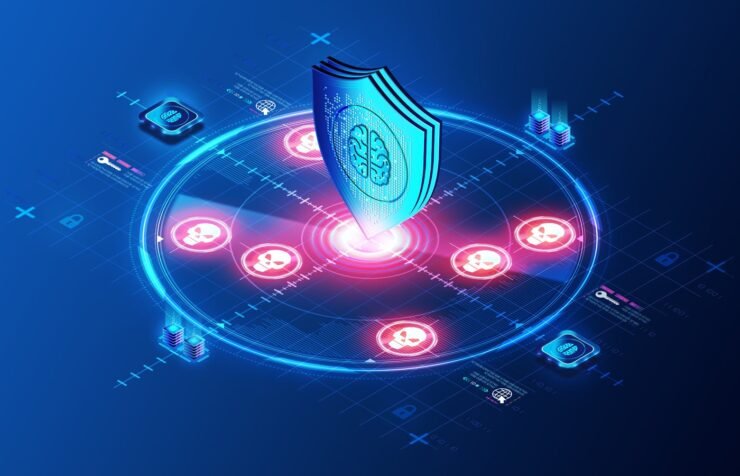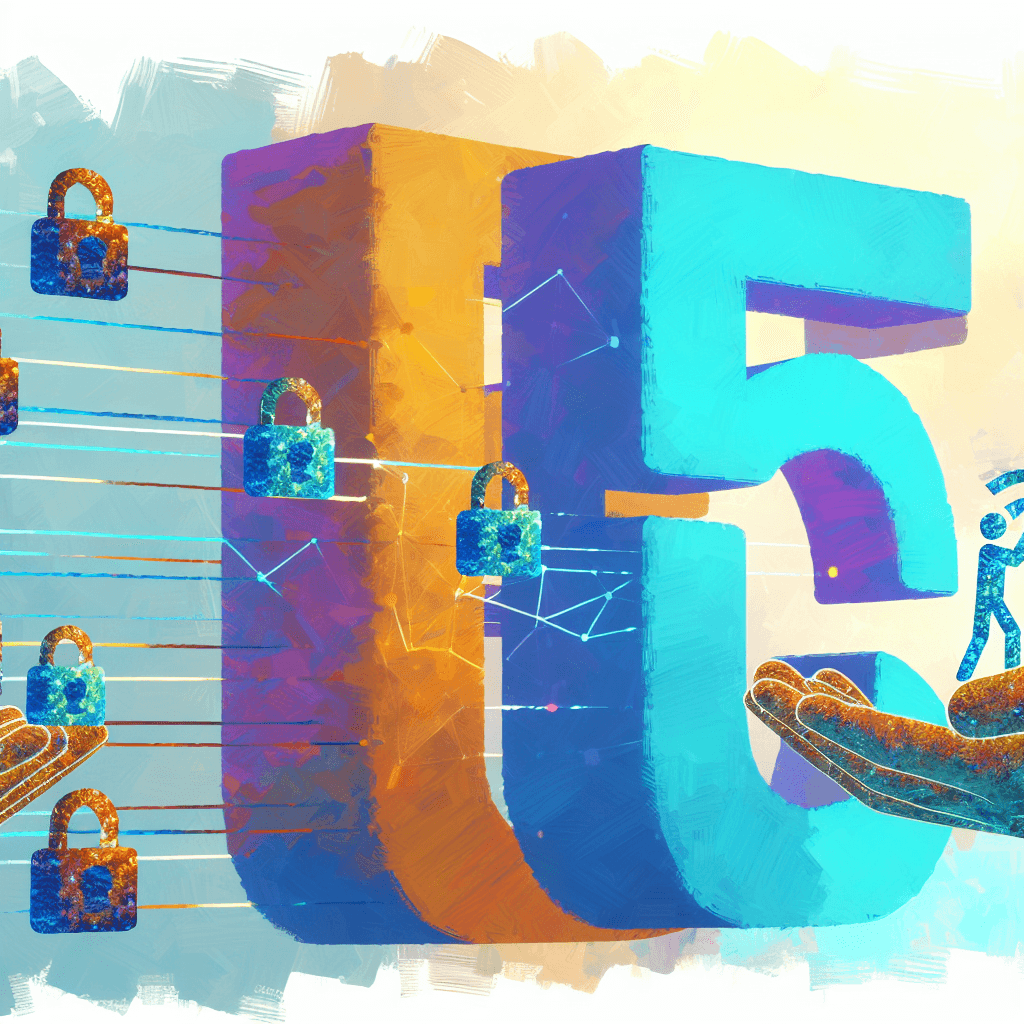October marks National Cybersecurity Awareness Month in 2024, an annual effort to educate and empower individuals and organizations on the importance of cybersecurity. However, as we reflect on the state of cybersecurity today, it’s hard to ignore the unsettling truth: despite technological advancements and increased investment, the problem is only getting worse. The growing frequency and sophistication of cyberattacks, coupled with rising costs for victims, signal that current strategies are not enough to stem the tide. In the U.S., the cost of a data breach is nearing $5 million on average, with the healthcare sector being hit particularly hard, where breach costs are soaring towards $11 million per incident.
This escalation highlights a critical opportunity for organizations to rethink their approach to cybersecurity. Awareness, education, and innovative security mechanisms must evolve to keep pace with the threat landscape. What we are doing now is clearly not working, and unless we change our mindset and tactics, the situation will continue to spiral out of control.
The Cost of Breaches: More Than Just Dollars
The rising cost of cyber breaches is staggering, not just in monetary terms but in the broader implications for trust, reputation, and business continuity. In the healthcare sector, where patient data is extremely sensitive, breaches have life-altering consequences. A leaked medical history or Social Security number isn’t just an inconvenience—it’s a doorway to identity theft, financial ruin, and in some cases, compromised healthcare access.
According to IBM’s 2023 Cost of a Data Breach Report, the average cost of a breach across industries in the U.S. reached an all-time high of $4.45 million, with no signs of slowing down. In the healthcare sector, this number is even more alarming, with costs climbing to $10.93 million per incident. Despite advancements in detection tools and security protocols, these figures indicate that reactive strategies—patching holes after an attack—are insufficient. Attackers are moving faster, finding new vulnerabilities, and exploiting human error, all while businesses struggle to keep up.
More Tools, Worse Cybersecurity: Why Current Approaches Aren’t Working
One of the greatest ironies in cybersecurity today is that, despite the rapid expansion of tools and technologies designed to protect our data, the situation continues to worsen. We’ve seen significant advancements in artificial intelligence, machine learning, and real-time threat detection, all of which should theoretically lower the risk. Yet, the reality is starkly different—breaches, ransomware attacks, and data leaks are increasing year after year.
The core issue isn’t just technological; it’s strategic, and more importantly, it’s about what we value. Many of today’s security tools simply repackage existing information into more digestible formats for security analysts, who remain the most critical link in the chain. But here’s the problem—simplified data doesn’t necessarily lead to better action. Whether the data is complex or straightforward, analysts often don’t know how to respond effectively. This combined to a deeper strategic flaw: our focus on protecting what we perceive to have the most economic consequence—“sensitive information” like Social Security numbers, dates of birth, and names.
Yet this focus is misplaced. Much of this data was always public record and has now become widely available through countless breaches. Anyone with minimal effort can find a person’s birthdate or address online. These aren’t the real “data leakage” anymore.
Hackers understand this well. They know that the embarrassment and economic penalties associated with a breach—especially for organizations—are far more valuable than the data itself. That’s why they continue to steal information, leveraging it to extort companies by threatening public exposure.
What’s particularly interesting is that this problem is somewhat unique to the U.S. In many countries, leaking someone’s healthcare records—say, a cancer diagnosis—might lead to sympathy and support at work. But in the U.S., such a disclosure could put someone in a uniquely vulnerable or precarious position, leading to discrimination or even job loss. This cultural dimension plays a significant role in shaping how we approach and value cybersecurity, making the challenge even more complex.
Changing the Paradigm: A Shift from Leakage to Compromise
To truly change the game in cybersecurity, we must shift our focus from merely preventing data leakage to actively preventing system compromise. While “Zero Trust” is often touted as the silver bullet, even that concept risks becoming an over-marketed cliché thanks to marketing

campaigns of cybersecurity firms. The real issue is that most of the data being stolen in cyberattacks—names, emails, birthdates—has already been leaked countless times. This makes the theft itself less important than how easily that data can be used to commit fraud, disrupt businesses, or wreak havoc on individuals’ lives.
Instead of fixating on protecting data that’s already public or easily accessible, we need to concentrate on minimizing the damage that occurs when this data is inevitably exploited. This means leveraging tools we already have, like AI-powered user behavior analytics, to create smarter controls that prevent attackers from making the leap from data theft to full system compromise.
Banking
For example, in consumer banking, simple but highly effective controls could dramatically reduce risk. Imagine if all first-time international financial transactions had a mandatory 72-hour waiting period, or if any U.S. transaction over $10,000—which is already reported to the IRS—required additional metadata about the receiving party would be shared and stored securely at the initiating bank, visible to the sender. Furthermore, financial transactions could be made reversible within the first 30, 45, or even 60 minutes, offering a crucial buffer against fraudulent activity. These measures would make it far more difficult for attackers to immediately exploit the victim.
Healthcare
A parallel approach can be applied to the healthcare industry, where stolen data like medical records can be weaponized against patients and providers. What if every request to access highly sensitive patient information, such as medical history or prescriptions, triggered a multi-step verification process to ensure that the requester is both authorized and legitimate? More importantly, what if we reimagined the entire approach to medical record management? Instead of hospitals storing and safeguarding these records, the data could be placed directly in the hands of patients—the true owners of the information—who often struggle to access their own records as it is. Empowering patients with control over their own data would not only improve access but also reduce the risk of large-scale data breaches at healthcare institutions.
Ultimately, the goal is to implement fail-safes that don’t just protect data but make it exceedingly difficult for cybercriminals to weaponize it once it’s stolen. By focusing on compromise prevention and containment, rather than obsessing over data leakage, we can start to move the needle on cybersecurity.
Start Cybersecurity Education Early
Another critical gap in our current approach is education. While businesses are spending millions on cybersecurity tools, there is relatively little focus on educating the public—particularly younger generations—on how to protect themselves online. The reality is that cybersecurity education needs to start early, beginning in elementary school and continuing through middle school and beyond.
In an increasingly digital world, children are exposed to cyber threats from a young age. Whether they’re using social media, playing online games, or even just browsing the web, they’re at risk of being targeted by cybercriminals. Teaching children about the basics of cybersecurity—such as password hygiene, recognizing phishing attempts, and understanding the importance of privacy—can help create a generation of internet users who are more resilient to cyber threats.
Cybersecurity education should be integrated into school curriculums, much like basic math or reading. This proactive approach would arm individuals with the knowledge to protect themselves and their personal data long before they enter the workforce.
The Path Forward: Rethinking Cybersecurity
The cybersecurity landscape of 2024 demands decisive action from organizations. Breaches are becoming more costly, attacks more sophisticated, and despite advanced tools, the core issues remain unsolved. It’s time to move beyond traditional, reactive thinking—focusing solely on data protection after breaches occur—and instead shift toward “proactive strategies” aimed at containing compromises, educating future generations, and redesigning how we secure data and systems.
But that’s not enough. We must bring accountability to the forefront and enforce consequences for organizations that release flawed code into the public sphere. In today’s world, it should no longer be acceptable to put vulnerable software into circulation, especially when it can have life-threatening consequences. We hold school teachers and daycare workers to high standards to protect our children; why do we not hold coders and programmers—whose neglect can put people, and often kids, at serious risk— to the same level of responsibility? Software vulnerabilities are not just technical oversights—they are failures that can cause real-world harm.
National Cybersecurity Awareness Month is the perfect time to start this conversation. Organizations that embrace accountability, invest in proactive security measures, and hold themselves to higher standards will not only protect themselves more effectively but also set a new precedent for cybersecurity across all industries. The clock is ticking, and it’s time for a change.
Continue Reading . . .
If you like this story you should check out some of the other stories in the Cybersecurity section







